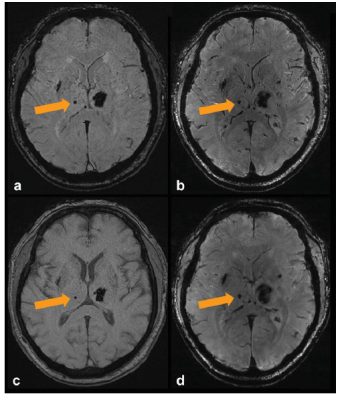|
Educational Course
Primer for Ultrahigh Field MRI |
|
Primer for Ultrahigh Field MRI
Weekday Course
ORGANIZERS: Gregor Adriany, Christoph Juchem, Mary McDougall, Gregory Metzger
Tuesday, 19 June 2018
| N02 |
13:45 - 15:45 |
Moderators: Samantha By, Christoph Juchem |
Skill Level: Basic
Session Number: Tu-06
Overview
The goal of this course is to provide practical information and guidance for those new to imaging the human brain and body at ultrahigh magnetic fields (i.e., at or above 7.0T). The potential benefits and challenges will be addressed as it relates to hardware, field management, safety, and multiple applications. A differentiation will be made between what is possible with standard systems and what hardware and strategies are needed to tackle more advanced topics (e.g., brain- versus body-imaging).
Target Audience
Physicist, researchers, and clinicians aspiring or new to imaging the human brain and body at 7 Tesla and above.
Educational Objectives
As a result of attending this course, participants should be able to:
-Explain the challenges that need to be overcome to realize the advantages of ultrahigh field imaging;
-Identify the hardware and method requirements for head and body imaging applications; and
-Describe in what ways ultrahigh field benefits several applications in the head and body.
13:45
|
|
 Ultrahigh Fields: What You Want & What You Don't Ultrahigh Fields: What You Want & What You Don't
Kamil Ugurbil
Since the introduction of the first 7 Tesla system in 1999, steady improvements in instrumentation and ever expanding armamentarium of image acquisition and engineering solutions to challenges posed by ultrahigh fields (UHF) has brought UHF imaging to exquisite anatomical detail and biological information content in many organ systems of the human body. However, like all technologies, magnetic resonance applications at UHF have applications-specific advantages and limitations. This lecture will aim to clarify the primary advantages that we should exploit (“what we want”), while avoiding some of the pitfalls that detract from these advantages (“what you don’t want”).
|
14:15
|
|
 System Requirements Beyond 3T System Requirements Beyond 3T
Cornelis van den Berg
This educational reviews the system requirements of a modern ultra high field MR system. It describes magnetic and gradient specifications and discusses in more depth RF challenges and solutions for successful UHF MR imaging.
|
14:45
|
 |
 Getting What You Want: Managing the Mayhem Getting What You Want: Managing the Mayhem
Xiaoping Wu
In this educational lecture, we will review possible strategies that can be used to manage the mayhem of RF non-uniformity and SAR, the two major challenges at ultrahigh field. Specifically, we will start with a brief discussion as to what is possible on a standard system and will then focus on what is possible when parallel transmission is available. In particular, we will discuss the various forms of parallel transmission alongside their demonstrated utility for brain and body imaging at 7 Tesla and above. We will also explain how parallel transmission can be used to reduce or manage SAR. In the end, we will summarize what is learned and will discuss other aspects of parallel transmission that are not covered in this lecture.
|
15:15
|
 |
 The Payoff for the Pain The Payoff for the Pain
Mark Ladd
This presentation will emphasize some clinical and scientific applications in human ultra-high field MR that particularly benefit from the changing physical characteristics at high magnetic fields, including susceptibility-weighted imaging and phase contrast techniques, imaging with X-nuclei, MR spectroscopy, and CEST imaging.
|
15:45
|
|
Adjournment & Meet the Teachers |
|
| Back |
| The International Society for Magnetic Resonance in Medicine is accredited by the Accreditation Council for Continuing Medical Education to provide continuing medical education for physicians. |



